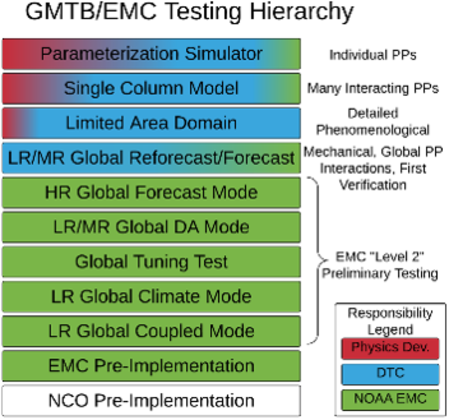GF Cycled Testing

Hierarchical Testbed Overview
The GMTB conducted an assessment of the GFS using the Grell-Freitas (GF) cumulus parameterization (GFS-GF) and compared the results against a control run using the GFS FY17 which employs the scale-aware Simplified Arakawa Schubert (SAS) cumulus scheme (GFS-SAS). This test was a follow up to a previous test conducted by GMTB using the GFS FY16, in which GF runs were initialized from the operational GFS analyses (cold starts). In contrast, for the current test, cycled data assimilation was employed to produce initial conditions consistent with the model physics. Additionally, a set of GF cold-started runs was produced using the FY17 GFS (GFS-GFcold) for an assessment of the impact of of cycling. The test, which employed the GMTB Single Column Model (SCM), and the Global Spectral Model (GSM) was planned jointly by the GF scheme developer, GMTB, EMC, and representatives of NOAA’s Next-Generation Global Prediction System program, with the goal of supporting the development of an advanced physics suite for the GFS. Global forecasts were run at medium resolution (T574, approximately 34 km) without tuning of the physics suite. Since NGGPS is funding an effort to contrast, compare and potentially unify the SAS and GF schemes, it is recommended to defer further testing of GF by GMTB until results from this effort are available.

Figure 1. Diagram illustrating the testing hierarchy plan to support physics development for NGGPS. LR indicates low resolution, MR medium resolution, and HR high resolution. Color shading indicates where the different groups are anticipated to focus their efforts (red - physics developers, blue - GMTB task within the DTC, and green - EMC). PP stands for physics parameterization.
